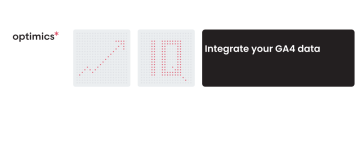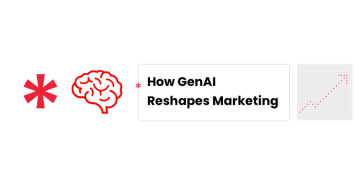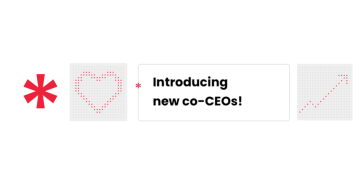
14. 3. 2023
Integrate your GA4 data
It’s a great idea to integrate your GA4 data with data from other systems, achieving an overall picture that includes both online and offline behavior. With GA4, it’s easily possible, as BigQuery export is available even for the free GA4. Taking small steps can be easy, no need to run an enormous project.
Introduction
GA4 is a magnificent data source. Nevertheless, without a proper understanding of the context, it is only a small part of the whole complex world. And good data understanding goes hand in hand with good data integration.
Imagine a user that comes from an on-line ad campaign, views a product on your website and for whatever reason decides to buy off-line -by visiting your store, ordering over a phone call etc.
Had it not been for proper data integration, how would this scenario appear? In the ad system, this would be considered a lost conversion (no on-line conversion and no data about the following steps). The order management system would view him as someone who came from the website with no information about his true acquisition source.
Nobody is a winner in this scenario:
The marketing team cannot see the real value of their effort. They will not see the actual number of conversions, nor their profitability. They run campaigns based on feelings/best effort, not on actual numbers.
The sales team does not see the actual value of every marketing channel. Knowing that “this conversion came from our web” is useless without context. This may even lead to misinterpretations such as “our web is performing great, bringing so many phone orders” while the truth is that users are struggling with on-line ordering and some of them decide to order by phone while the other part leaves and never returns.
The user cannot be given personalized content (in fact, it is usual that after such a conversion, the user is still being hunted by ads for a product he has already bought).
Thus, the overall process performance cannot be fully understood and optimized.
But what if we could see the reality in our data? Wouldn’t it be great to see the following:
The marketing team sees the actual number of conversions their campaign has brought. They see even the actual profitability and based on these numbers, they can report the real cost-benefit impact of their campaigns. They can allocate marketing budgets based on actual business performance.
The sales team knows the value of each marketing channel. Based on complete funnel data, they can identify bottlenecks and optimize the whole business process, making it easier for the customers to use.
The user is shown relevant content right after buying our product – such as articles about the product he has bought, relevant services or other products he could like.
This can only mean one thing: The future of analytics is data integration.
How to do this with my Google Analytics 4?
The following are the key points that should be taken into consideration.
Enable BigQuery export
Luckily, with GA4, we are able to start easily even with the free version. The first thing is to enable exporting GA4 data into BigQuery – a powerful on-line database running on Google Cloud Platform:
Identify the data you want to integrate
Identify your data sources. You might want to connect data from marketing systems (Ads, DV360, Facebook) or internal sales data. Decide which scenario is most important to you and which questions you would like answered.
Consider data availability & update frequency
Some of the data sources are updated in real time; some of them are updated daily, frequently with a delay. Based on the actual source data availability, some reports and data transfers may be ready later than others.
Identify pairing keys
What is the crucial thing to do in order to connect any data? Correct, having a pairing key. Without those, we really cannot move on. Make sure you identify them in your data model and fill them in correctly.
This may require some implementation changes in order to provide a successful pairing.
Consider preprocessing of the BigQuery tables
Building an integration on top of raw GA4 BigQuery tables can be a bit complicated due to their data structure, which includes nested values, etc. Usually, the best approach is to preprocess those tables, creating a nice, neat data structure according to our business needs.
Dataform or DBT is the most commonly used tool among our clients.
Decide where to store the data
The decision where to store the integrated data shall be based on various factors, such as:
What data will be contained? Is there any requirement to have them in an internal system (such as IT security requirements) or shall they remain in the cloud?
What is the following use of data, which systems will I need to connect.
Where will the data be visualized? Are connectors available?
Implementation & operating costs, team’s knowledge.
Naturally, the whole solution can run in a cloud environment. The point is to minimize implementation and operation costs while meeting any possible requirements that may come up.
BigQuery pricing
In BigQuery, you pay only for the actual service usage. The pricing model splits into two areas:
Data storage – active data storage + long-term archive (data you actually use + historical data, not frequently accessed)
Data processing – actual data processing queries
In fact, both areas are quite cheap. The typical usage cost for our clients varies from hundreds (most often) to low thousands of euros monthly. not a big deal.
Where to start?
Anywhere. The great thing about GA4 data integration is that it can be quite flexible. All you have to do is turn on the export to BigQuery and everything else is completely up to you. You can easily do the whole integration in stages, starting with small use cases and a small number of integrated data sources, and provide initial analytical insights in a very short time, and eventually expand over time.
The possible use cases are almost infinite.
Využijte sílu*
marketingových dat k optimálnímu prodeji
Get in touch
Interested to find out the real potential* of your data?
Drop us your contact details and we will
get back to you shortly.


